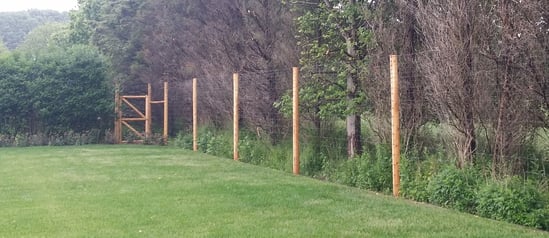Safety Risks and Slow Motion
The deer population has been an ongoing concern for several reasons. They’re a safety risk near roadways and a nuisance in urban areas. Do you remember the movie “Bambi?” That’s the term commonly used when referring to deer. My first encounter with a deer was at age nine. I remember riding in a car one fall morning along a country road lined with flat open fields and barbed wire fencing. Suddenly, my eyes fixed on a brown object moving at an unbelievable speed towards the road. A deer suddenly leapt over the fence in front of the car. Everything moved in slow motion as the deer slid onto the hood and smashed through the windshield where its long neck and head came to rest between the driver and me. Fortunately, no one was injured. The deer was not so lucky. True story!
Deer Control
The Northeast and other areas have seen damage from white-tailed deer on crops, orchards, and residential landscaping. Community developments in rural areas have forced deer to look for new food sources in gardens, and even lawns. Destruction of vegetation in communities has generated awareness for new methods of deer control in conjunction with deer fencing materials: polypropylene, vinyl-coated hex netting, and high tensile deer fence.
Integrated Pest Management
The EPA definition - Integrated Pest Management (IPM) is an effective and environmentally sensitive approach to pest management that relies on a combination of common-sense practices. IPM programs use current, comprehensive information on the life cycles of pests and their interaction with the environment. This information, in combination with available pest control methods, is used to manage pest damage by the most economical means, and with the least possible hazard to people, property, and the environment.
The IPM approach can be applied to both agricultural and non-agricultural settings, such as the home, garden, and workplace. IPM takes advantage of all appropriate pest management options including, but not limited to, the judicious use of pesticides.
An Integrated Pest Management approach is a strategic approach to dealing with deer. The University of Rhode Island landscape horticulture program lists a fact sheet online with an (IPM) control plan that lists effective methods to control deer.
Making Progress: Three Steps
Before instituting an effective IPM method it’s important to take the following three steps:
- Define your objectives by identifying your short and long-term goals.
- Analyze the site by noting the damage done, plants eaten, and size of the deer herd if possible.
- Develop a plan by having a budget and deciding what tactics to employ. You can put all this together in an IPM approach to your deer control problem with greater success.
A Deer Fence that Delivers Results
Deer fence is one of the ways of implementing an IPM for deer control. Three types of mesh fences are available: 2" x 1-3/4" extruded black polypropylene, 1" black vinyl coated hexagonal mesh, and 12½ gauge high tensile woven wire. All are available in extra tall sizes. The type you choose can be determined by the steps listed above. Which is best suited to your needs?









